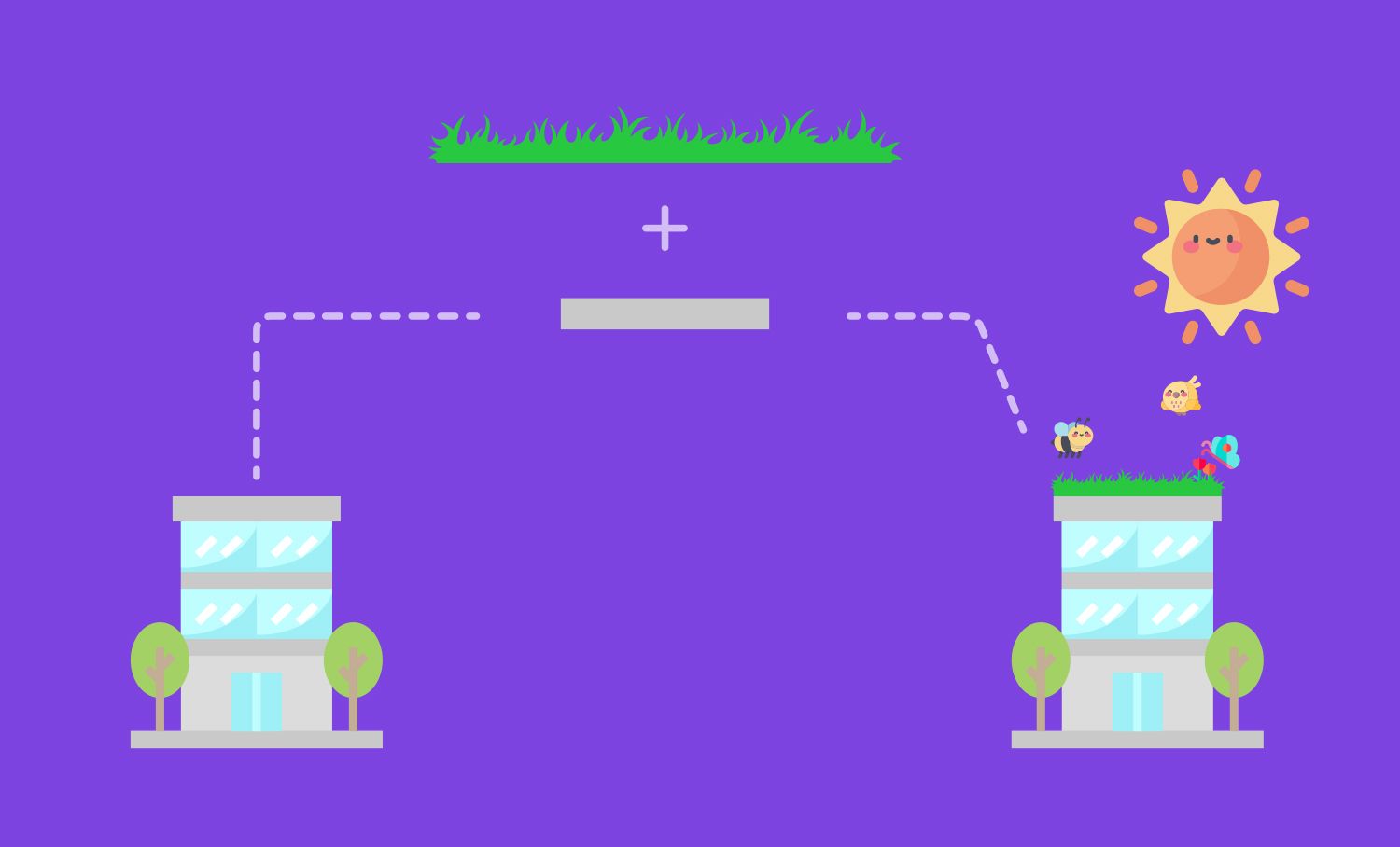Green roofs – A Catalyst in Energy Efficiency?
Green roofs - Could this Nature Based Solution be the key to solving a variety of environmental and economic issues facing many organisations today?

Could this Nature Based Solution be the key to solving a variety of environmental and economic issues facing many organisations today? Let’s discuss.
What is a green roof?
A green roof, also known as an eco-roof or vegetative roof, is a layer of vegetation planted over a waterproofing system that is installed on top of a flat or slightly sloped roof. The green roof depth depends on a variety of factors, such as roof structure, annual rainfall and selected vegetation. They can be shallow with more limited biodiversity, these require less maintenance and watering. Or they can have significant depth to support a wide variety of vegetation, including trees, these will of course require more maintenance, however, they will also provide increased benefits.

Role of carbon sequestration
A green roof can offer environmental, as well as societal and economic benefits (hitting the triple bottom line). Green roofs reduce air pollution by sequestering carbon and producing more oxygen, through the vegetation present. This is a welcome benefit in urban areas such as cities where there are often high levels of air pollution. Through this carbon sequestering, green roofing on buildings can play a major part in a building becoming carbon neutral. Think of it as carbon offsetting of sorts, by sequestering carbon, the building gets to offset this against its carbon emissions from its energy use.
Green roofs can also help enrich biodiversity by providing an area for plants and other wildlife, in particular for pollinators. They are used in already existing free space, providing a low maintenance area of beauty within cities, this in turn can help mental health and wellbeing of citizens within urban areas. Alongside these benefits they also offer a mitigation strategy with their ability to help alleviate urban flooding, they:
· Reduce flooding by increasing rate of infiltration and evapotranspiration.
· Green roofs absorb 80% of rainfall compared to 2% for conventional roofs.
· Decrease peak discharge volume, delay peak discharge, and thus increase stormwater retention.
Adoption of green roof policy
Countries including Canada, Japan, Singapore and Hong Kong have widely adopted green roofs in urban areas in order to reduce the negative environmental impacts of manufacturing and industry activities. Furthermore, many major European cities have set policies in relation to the implementation of green roofs, for example Munich in Germany has mandated the inclusion of vegetation on all flat roofs larger than 330 square feet. In Copenhagen, Denmark green roofs have been mandatory on all new roofs with a pitch under 30 degrees since 2010. Basel in Switzerland, Rotterdam in the Netherlands and London in the UK all also have green roof policies and goals.

Several green roofs were also built on major buildings across the US, as part of a study run by the Environmental Protection Agency (EPA). The initiative aimed to reduce the urban heat island effect in cities and improve air quality. "Urban heat islands" occur when cities replace natural land cover such as vegetation and grassland, with dense concentrations of buildings, and other surfaces that absorb and retain heat.
NASA has also conducted research in this area, as part of their research in protecting the quality of life on earth. Their research aims to address the impacts of climate change and its effect on urban environments, by suggesting a variety of adaptation strategies to deal with these impacts. NASA research has found that roofs covered with vegetation – i.e. green roofs – provide a cleaner environment and energy savings.
They undertook a study that predicted that extensive use of green roofs could reduce summer surface temperatures. NASA’s study stated that green roofs absorbed 80% of rainfall compared to 2% for standard roofs. The study focused on New York showed that peak surface temperatures on NYC rooftops were on average 34˚ F (20˚ C) warmer than those of green roofs during the day, and 14˚ F (8˚ C) cooler at night.
Benefits
Many countries have adapted this environmental mitigation approach, and with good reason. Here is a short summary of the benefits of deploying a green roof on your building:
· Beautification (including increasing mental wellbeing)
· Reduces air pollution
· Supports pollinators
· Enriches biodiversity
· Uses already-existing free space
· Low-maintenance
· Sequesters carbon, and produces oxygen
· Reduces energy use and thus costs.
So could this Nature Based Solution be the key to solving some of the environmental and economic issues facing many organisations today? It certainly seems that way. So next time you are looking at a new or upgraded roof space, maybe consider helping the bees (and other pollinators) with a green roof for a win-win outcome.